The Winter War is sometimes characterized as Finland’s footnote to the Second World War. For a small country such resistance was not very common, but Finland’s – as it was thought – hopeless struggle for survival was then the subject of broad international marvel. Winston Churchill lyrically expressed himself during the war in his radio speech on January 20, 1940:
“Only Finland – superb, nay, sublime – in the jaws of peril – Finland shows what free men can do.”
He added: “We cannot tell what the fate of Finland may be, but no more mournful spectacle could be presented to what is left to civilized mankind than that this splendid Northern race should be at last worn down and reduced to servitude worse than death by the dull brutish force of overwhelming numbers.”
Fortunately, things didn’t work out quite that way. Finland’s free men and women prevented it – with the aid of significant luck. The Winter War struggle for survival became a kind of rear-guard battle which the Finnish army and the home front managed to maintain just long enough to avoid ultimate disaster. The legacy of the Winter War is Finland’s business card in the world.
The 80th anniversary of the Winter War again sparked a public debate in Finland about the causes of the war. Now it was asked if the Finnish government acted properly and it could even have avoided the war. In this context, the work of American historian, Professor Stephen Kotkin, famous Stalin researcher and interpreter, was particularly highlighted. With the so-called “newest research” as a backing, the view he expressed was that the war could indeed have been avoided, since Stalin’s objectives were limited and only concerned how to ascertain Leningrad’s security (Kotkin, Waiting for Hitler 1929 – 1941). In this view, the Finnish government’s unbending attitude led to a poor result for Finland.
That interpretation is not supported at all in “older” research. “The newest” historical research should, of course, be taken seriously and should be assessed, but its scientific value is not linked to how fresh the results are, but how its validity stands in relation to previous research. As a scientific discipline history is not an exact science, such as physics, where individual geniuses like Newton or Einstein could change the worldview with their revolutionary theories. Special knowledge about Finland is not one of Kotkin’s particular strengths, and for that reason alone he cannot be considered an authoritative Winter War expert.
The internal Soviet struggle about the Molotov-Ribbentrop agreement
The question of what position to take about the Molotov-Ribbentrop agreement became a hot domestic political issue in the USSR in 1989. In July of the previous year, Gorbachev himself reiterated in Poland the old Soviet position that Stalin’s and Hitler’s settlement was necessary (Harry Järv, Oavgjort i två krig (Draw in two wars) – Finland – Soviet Union 1939-1944).
The Soviet Union’s long-time Foreign Minister Andrei Gromyko, who at the beginning of his career was Molotov’s assistant, expressed his views especially on the secret additional protocol in an interview for Der Spiegel on 24th April 1989. He sharply contested the existence of the secret additional protocol. He claimed that he had never heard any Soviet diplomat mention such a document. After the war, Molotov had pointed out to Gromyko that no documents concerning his negotiations with Ribbentrop in 1939 should be acknowledged except for those officially published.
However, the war historian, Colonel General Dmitry Volkogonov, noted in October 1992 that there was watertight evidence that Gromyko and an unnamed Deputy Foreign Minister had seen the secret documents in 1975, as well as that Gorbachev’s assistant Valery Boldin had done so in 1987. Gromyko didn’t speak the truth to Der Spiegel’s editors.
Let’s go back a few years in time, to 1989. The debate in the Soviet Union gathered speed in the spring and summer of 1989, when Estonian professor Endel Lippmaa proposed to the sitting People’s Congress on 1st June that a commission be formed to investigate the Molotov-Ribbentrop agreement and its secret additional protocol. Gorbachev, who was under strong pressure from several directions, raised some objections, but accepted the proposal approved by the People’s Congress. Gorbachev’s close associate Aleksandr Yakovlev, known as the architect of the president’s perestroika reform program, was elected Chairman of the Commission.
A number of influential officials in turn then testified to the existence of the secret additional protocol. A copy was published in the weekly newspaper Argumenti in Fakti in August 1989. For a long time it had been claimed to be a forgery, since the original document had not yet been found.
Historian Lev Besymensky finally found a copy in the Foreign Ministry archive. Referring to Besymensky, Yakovlev too announced in Pravda on 18th August 1989 that “there was no doubt about the existence of the secret supplementary protocol“. Molotov’s meticulous archivist Vasily Panin had filed the document in 1939 and also made three copies identical to the contents of the microfilm stored in Bonn, Germany.
At the end of October 1992, it was reported that the originals of the Molotov-Ribbentrop agreement and its additional protocols had been found in the CPSU archive (New York Times). According to the military historian Colonel General Dmitry Volkogonov, there were a total of nine documents. However, it is likely that Soviet President Mikhail Gorbachev handed them over to Russian President Boris Yeltsin on 23th December 1991, two days before the change of power and his own departure. When Gorbachev handed over the dossier, which also plausibly contained other sensitive documents to Yeltsin, he stated:
“I am afraid they can lead to international complications. However, it is up to you to decide. ” (Wojciech Matierski, Katyn – A crime without punishment, p. 254)
Yakovlev presented the Commission’s findings on 23rd and 24th December 1989 (Pravda, 24th December 1989).
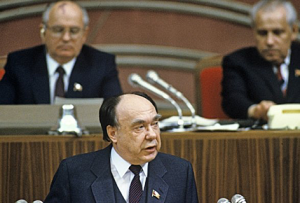 The investigation had not been easy. The non-aggression agreement itself was uncontroversial. By contrast, Stalin’s “main motive was not the treaty itself, but the provisions of the secret protocols: the opportunity to move Soviet troops into the Baltic States, Poland, Bessarabia and potentially even Finland. In other words, the main motive for the treaty was imperialist ambition. […] Dividing the prey with the predator, Stalin began to issue ultimatums and threats against neighbouring countries, especially the small nations. He brought Bessarabia into the USSR and restored [sic] Soviet power in the Baltic states in the manner of a great power. All of this distorted Soviet politics and national ethos” (Lindpere, ПАКТ МОЛОТОВА–РИББЕНТРОПА: трудное признание, Appendix 16).
The investigation had not been easy. The non-aggression agreement itself was uncontroversial. By contrast, Stalin’s “main motive was not the treaty itself, but the provisions of the secret protocols: the opportunity to move Soviet troops into the Baltic States, Poland, Bessarabia and potentially even Finland. In other words, the main motive for the treaty was imperialist ambition. […] Dividing the prey with the predator, Stalin began to issue ultimatums and threats against neighbouring countries, especially the small nations. He brought Bessarabia into the USSR and restored [sic] Soviet power in the Baltic states in the manner of a great power. All of this distorted Soviet politics and national ethos” (Lindpere, ПАКТ МОЛОТОВА–РИББЕНТРОПА: трудное признание, Appendix 16).
The following day, Yakovlev made a summary at the session of the People’s Congress and concluded his speech as follows:
“We are drawing a clear line between the non-aggression treaty, which was legitimate and justified, and the protocol that was immoral, unacceptable, and fails to comply with socialist values. The theory of relativity was a great breakthrough in our understanding of the laws of physics, but there is no relativity in the sphere of ethics. We have an obligation to maintain firm and sound criteria in making ethical judgements. It is time that we admit that criminal activity is unacceptable not only because of its effect, but also because it distorts minds and creates a situation in which opportunism and the absence of ethical considerations become normal.
Comrade People’s Deputies, regardless of what we decide, this will be not only a political decision, but also a moral one” (Izvestiya, 25th December 1989; found in Lindpere, Molotov-Ribbentrop Pact: Challenging Soviet History, 2009, Appendix 18).
The Soviet People’s Congress annulled the Molotov-Ribbentrop Agreement and its Additional Protocols by a vote of 1432–252 on Christmas Eve 1989. After that, Yakovlev no longer belonged to Gorbachev’s closest circle and he was sharply criticised by both conservatives and extreme nationalists.
Winter war research seen with Russian and Finnish eyes
From a Finnish perspective, Professor Mikhail I. Semiryaga’s (1922–2000) article “The Un-famous War” (Neznamenitaya voina) in the magazine Ogonek (22nd May 1989) was groundbreaking. In it, Semiryaga challenged Soviet notions then prevalent that the war was nothing but a limited border conflict. According to Semiryaga’s information, the Red Army’s forces against Finland had in March 1940 increased to more than 50 divisions and a few dozen brigades. When manpower of the other branches of the Armed Forces was included, the Soviet forces’ total strength was 960,000 men.
The questions regarding the Winter War have been thoroughly investigated for decades in both Finland and the Soviet Union/Russia, and they have returned to the fore at least once a decade. Half a century after the signing of Hitler’s and Stalin’s Molotov-Ribbentrop agreement and the start of the Winter War, the first clear signs in the Soviet Union were noted that the country’s role as instigator of the great war we call the Second World War had begun to be treated objectively.
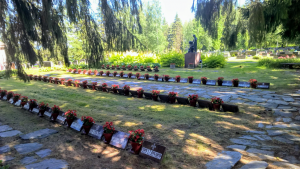 Colonel General Volkogonov – also the author of a biography of Stalin – told the newly revealed, but still unofficial truth about the Winter War to senior Finnish diplomat Max Jakobson in January 1989:
Colonel General Volkogonov – also the author of a biography of Stalin – told the newly revealed, but still unofficial truth about the Winter War to senior Finnish diplomat Max Jakobson in January 1989:
“Stalin was guilty. He alone decided to start the war without caring about the objections of the marshals. ”
The general was also sure that Beria was guilty of the Mainila Shots, the staged provocation a few days before the war. According to Professor Ohto Manninen, it is likely that an NKVD unit headed by Major Pavel I. Okunev conducted the artillery barrage.
Later that year, Gorbachev’s assistants tried to get their chief to acknowledge the Soviet Union’s debt as the instigator of the Winter War and to visit the Hietaniemi War Memorial in Helsinki, but neither took place because of resistance by conservatives. Instead, he honoured Lenin’s memory at a building in Hakaniemi, Helsinki, where the revolutionary leader had lived for a while in 1917.
On 13th September 1995, the influential Russian newspaper Rodina (Fatherland) organised a roundtable seminar on the Winter War in Moscow. In addition to journalists, prominent Russian and Finnish historians and diplomats also participated.
Perhaps most interesting in this “peaceful” discussion was how some of the Russian historians, such as Professor Semiryaga and the historian Pavel Aptekar (b. 1968) of the Russian State War Archives, expressed opinions that were very similar to traditional Finnish beliefs and how they clashed with history professors Nikolai Baryshnikov and his son Vladimir Baryshnikov from St. Petersburg and Vladimir Fyodorov representing the Russia-Finland Friendship Society. The latter mostly expressed traditional Stalinist Soviet views.
Regarding the issue of the Soviet objectives in Finland, Professor Semiryaga stated that the Soviet Union intended “to integrate all of Finland with the Soviet Union. The talk of moving the border 35 or 25 kilometres from Leningrad is pointless. Specialists who know the material from the archives cannot take seriously the suggestion of moving the border to protect Leningrad that was discussed during the negotiations. We know that the orders for the first day of the war clearly outlined when to take Viipuri, when to raise the red flag over the Finnish parliament, when to reach the Swedish border. There were even instructions on how to behave with Swedish and Norwegian border guards. There are those who say that Stalin did not want war. Of course, just like any leader of any country making demands of its neighbours, he did not want war, he wanted results. And he would not have minded if the results could be achieved by peaceful means.”
Pavel Aptekar gave a detailed account of the military contingency plans and the force build-up along the Finnish border. He argued that “Hopes that the Soviet Union was willing to solve problems [with Finland] peacefully are only very weakly substantiated… If the Soviet Union really wanted to solve the problems in a peaceful way, why did they start transporting troops, army formations and tank brigades to the Finnish border as early as the summer of 1939?”
For example, Aptekar mentioned the 168th Division that was set up in Vologda as well as some military units at the Estonian border. “Overall, this was already the beginning of concentrating forces.”
Russian diplomat Sergei Belyaev, who later served as a Minister Counsellor at the Russian Embassy in Helsinki, expressed his firm opinion that the Soviet Union’s intention was to Sovietise Finland. Belyaev referred to Molotov’s statement regarding the League of Nations protest against the Soviet attack:
“The Soviet Union does not wage any war against the Finnish Republic, there is an agreement with the Finnish People’s Republic, with the Kuusinen government (signed literally on the second day of the war). The old government has fled and abandoned the country to its fate. The Soviet troops are only assisting the aforementioned government in defeating White Finnish robber bands.”
Belyaev, who later assisted President Putin during numerous state visits, actively participated in the project in Suomussalmi to erect a memorial – Raatteen Portti (Raate Gate) – to honour the memory of the Finnish and Soviet soldiers who fell during the Winter War. In the Soviet Union or in Russia, there are no memorials to soldiers who fell in that war.
Belyaev also drew attention to the question of why the Soviet Union selected Suomussalmi as a strategic thrust direction for the Red Army operations.
“The military justification is clear: It [Suomussalmi] is located where Finland is narrowest, and the 163rd Division had been assigned to cut the country in two halves. But Finnish historians point to another motive: this area was known for the poverty of its population and for its leftist sympathies. In addition to army units, there was also an NKVD independent regiment among the attacking forces. Its tasks included working with the locals. During the 2-3 weeks spent by the Soviet troops in these municipalities, they formed committees and held meetings – cells were created, and while they were not yet Soviet or socialist, they were cells of “popular” power. This shows that attempts were made to Sovietize Finland.”
Russian researchers have later reached similar conclusions. Historian Tatiana S. Bushueva summarizes the following in her article “Talvisotaa koskeva venäläinen historian kirjoitus” (Russian historical writings about the Winter War), included in the 2009 book Tuntematon talvisota – Neuvostoliiton salaisen poliisin kansiot (The Unknown Winter War – The Soviet Secret Police files) by Professor Timo Vihavainen and Academician Andrei Sakharov:
“However, all Russian researchers are in fair agreement that the Soviet government intended to incorporate Finland and to make the country a socialist republic or a Soviet Republic in order to secure Leningrad and strengthen its northwestern border.”
In the same book, Russian historians reported in more detail on the results they had reached in the 2000s regarding decisions on the Red Army forces required and their goals for Finland’s Sovietisation. Historian Lyudmila P. Kolodnikova refers to the Soviet leaders’ own statements. “The attack [on November 30, 1939] began [on the Karelian Isthmus] with a devastating firestorm from our artillery. The opponent’s area became one big fire”, Red Army chief political officer Lev Mekhlis later recalled. Stalin demanded that the troops be ready to launch the main attack in the direction of Vyborg on 14th December at 9 a.m. “The most important task of the operation is to beat the opponent thoroughly and to conquer Vyborg”, was the order issued by Stalin, Voroshilov and Shaposhnikov.
But this was still only Stalin’s official, allegedly, “limited” goal. Kolodnikova:
“The task of the Red Army was to annihilate the opponent on the Karelian Isthmus and north of Ladoga in 8-10 days and to prepare for the attack against Helsinki and the entire country’s occupation. Leningrad’s military district council was fully convinced that […] the troops would honourably fulfil their sacred duty to the motherland, totally destroying the White Finnish army and forever denying the warmongers entry to the Gulf of Finland and the city of Leningrad.”
“We do not come to Finland as conquerors, but as the friends and liberators of the Finnish people from the yoke of the big landlords and capitalists. […] We respect Finland’s freedom and independence. Forward, the sons of the Soviet people, the Red Army warriors, Onwards to the enemy’s total downfall”, wrote Leningrad Military District commander Meretskov and War Council member Zhdanov in their order of the day on November 29, 1939.
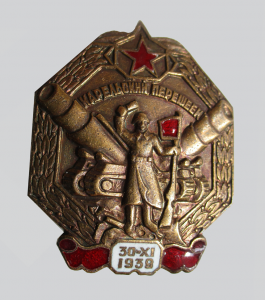 In reality, therefore, Stalin’s allegedly “limited goals” stand out in stark contrast to the tasks his subordinates received, and the orders they issued, as well as against the background of what took place during the war itself. The information the Finns gathered during the war and through thorough research for several decades thereafter do not justify giving up long-standing perceptions built on solid foundations.
In reality, therefore, Stalin’s allegedly “limited goals” stand out in stark contrast to the tasks his subordinates received, and the orders they issued, as well as against the background of what took place during the war itself. The information the Finns gathered during the war and through thorough research for several decades thereafter do not justify giving up long-standing perceptions built on solid foundations.
President of the Republic Kyösti Kallio stated in his radio address to the people on Independence Day on December 6, 1939.
“Now the whole world can see that this is not about Leningrad’s security, as the offensive takes place along the entire long border from Petsamo to Rajajoki [ru. Сестра] and all the way to Hankoniemi (Hangö udd). […]. It seems that the mighty superpower wants to rob us of our independence, which [the Soviet Union] itself has recognized and thus everything that is precious and sacred to us.”
In assessing the objectives of the Soviet Union, the overall picture is central. In addition to the political negotiations between the Soviet Union and Finland, the plans of the Red Army and their execution must also be taken into account. Professor Kotkin’s “newest research” addresses the latter question very sparingly. In this context, it is therefore worth highlighting older research: Finnish Colonel Matti Aarnio’s classic work Talvisodan ihme (The Miracle of the Winter’s War) contains a very good, detailed analysis of the Soviet railway network and its transport capacity and the problems that related to the troop concentrations.
Aarnio notes that the agreement with Germany in August 1939 came as a great relief to the Soviet Union. Already that spring powerful measures had been taken to strengthen the implementation of the plans aimed at Finland, including increasing the personnel that were subordinate to the Leningrad Military District War Council. “These measures were soon recognized at our eastern border”, writes Aarnio. “In early October […] our [opponents] could also use such divisions and troops as were originally reserved for action elsewhere in the original plans.”
The danger of a German attack had disappeared, but they had to act quickly in view of Germany’s victorious war in Poland and its conquest. “Thus, even before the war, a division, the 100th Division, was sent from the Kiev Military District to the Karelian Isthmus.”
The Soviet mobilisation and the force buildup along the Finnish eastern border in the autumn of 1939 was already a huge logistical task in itself. “The pressure and urgency caused by Hitler’s attack in Poland didn’t ease the task of executing the troop concentrations despite preparations already made.” Aarnio describes in detail the problems related to transport and their implementation and highlights the traffic congestion in the rail network of Russia. His conclusion is that “the transport of troops (the force buildup) by rail to Finland’s eastern border took three times longer than to the Karelian Isthmus. If you take further into account the long march distances and [the weak] road connections from the Murmansk railway [a.k.a. the Kirov Railway] to the border, you will realize that it also extended the force buildup phase to our eastern border.”
Adding to this, the fact that necessary supplies for the invasion of Finland had already been transported along the waterways and railways, “all this shows that a firm decision of the march of the troops into Finland had been made long before the actual mobilization”.
Aarnio also fully acknowledges the Soviets: “Taking into account the special circumstances in which the troop concentrations were carried out, it can be said that this extensive movement of forces in technically difficult circumstances was expertly executed. It points to the competence and high level of the Red Army’s high command and railway authorities. […] The transport of troops by railway was superbly planned, which is the best evidence that not only time was spent in the preparation, but also that highly competent people put a lot of effort into this.”
Colonel Aarnio’s analysis is solid. Rodina magazine (12/1995) stated that concrete war preparations began as early as in June. Then, for example, basic logistics centres for the troop transports were established. The Soviet Union’s intentions towards Finland were already clear months before the Molotov-Ribbentrop agreement was concluded. Marshal Kirill Meretskov, then commander of Leningrad’s military district, wrote in his memoirs:
“Stalin emphasized that serious moves can be expected from the German side already during the summer. Whatever they were, they would also affect Finland directly or indirectly. Therefore, there is reason to hurry.”
Russia’s current attitude to World War II
After the collapse of the Soviet Union, historical research in Russia could be conducted in a fairly normal Western way for nearly two decades. In May 1994, President Yeltsin apologized to Finland for the Winter War as a crime against Finland. Unfortunately, in recent years, this position has changed.
Following the collapse of the Soviet Union, Russia’s reform efforts did not produce the desired result. Russia was unable to compete successfully with the West or with the rapidly growing China. According to two eminent Russia scholars, Professor Timothy Snyder of the United States and British analyst Keir Giles, it was for that reason that the country’s leadership decided to apply a different strategy to regain and preserve its status as a superpower. A national victim narrative was created, which derives its power from the past, and a narrative in which the country is forced to fight for its existence surrounded by malevolent opponents.
The Great Patriotic War became one of the pillars of self-image in Putin’s Russia. As Russia’s extreme nationalist former culture minister Vladimir Medinsky has indicated, the image of the Soviet Union’s glorious Red Army cannot be allowed to be shattered.
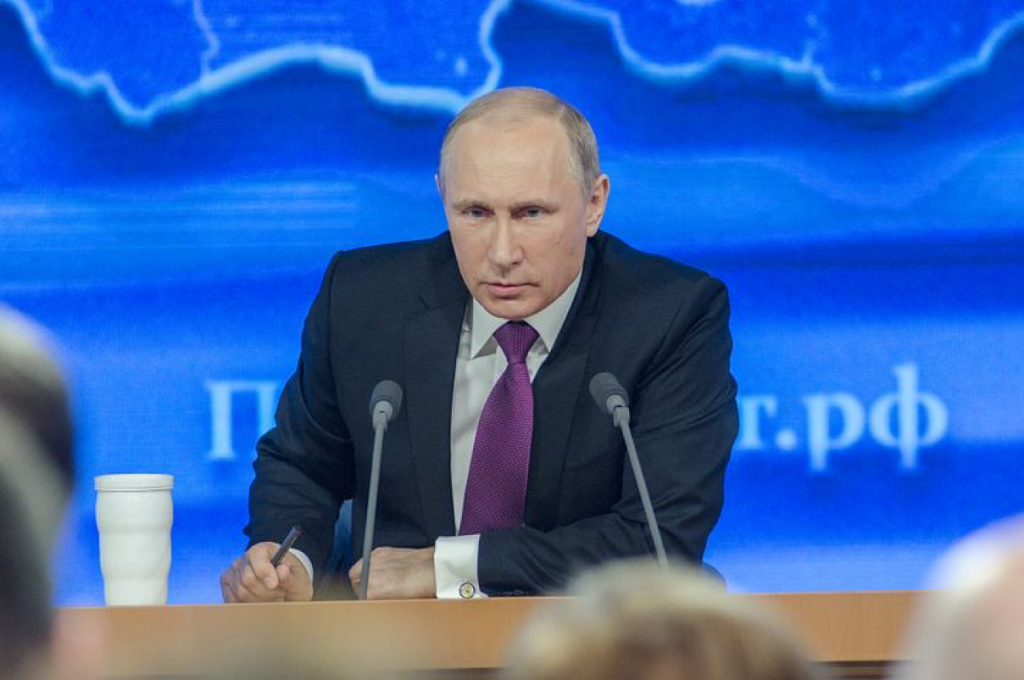 President Vladimir Putin.
President Vladimir Putin.
Russia reacted sharply to the resolution adopted by the European Parliament in September 2019 on the importance of the Molotov-Ribbentrop Agreement (European Parliament News, 19th September 2019). According to the EU resolution, the Soviet Union also bears responsibility for starting the Second World War. President Putin described this position as “a shameless lie,” according to German news agency DW (11th December 2019). The Kremlin’s official position had already been expressed earlier by the head of the foreign intelligence service SVR, Sergey Naryshkin (Russian news agency RT, 29th August 2019). According to it, Russia had no alternative but to conclude an agreement with Germany. Several well-known Russian politicians have directed the blame even at Poland itself (The Moscow Times, 2nd September 2019).
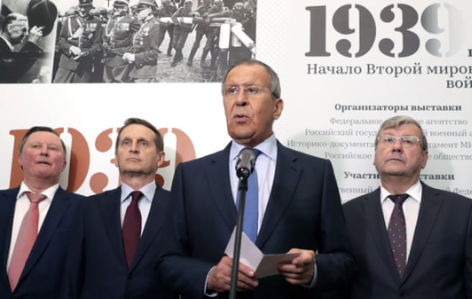 In this way, Naryshkin struck the first notes of the Kremlin’s counter-attack to eradicate the disastrous historical consequences of Hitler’s and Stalin’s agreements (EU vs. Disinformation Review, 6th February 2020). The news agency TASS formulated Russia’s goal as follows on 31st January 2020:
In this way, Naryshkin struck the first notes of the Kremlin’s counter-attack to eradicate the disastrous historical consequences of Hitler’s and Stalin’s agreements (EU vs. Disinformation Review, 6th February 2020). The news agency TASS formulated Russia’s goal as follows on 31st January 2020:
“Russia requires the OSCE to approve a resolution condemning attempts to rewrite the history of World War II.”
Here, however, it is Russia which is conducting the historical revision and attempts to pressure others to also approve of the re-established Stalinist view of history. President Putin himself has used exceptionally harsh language (RT, 18th January 2020 and 10th March 2020).
During the last years of the Soviet Union, liberal politicians, such as the aforementioned Aleksandr Yakovlev, could talk about World War II in the same terms as in the West. When on 23rd December 1989, Yakovlev presented to the People’s Congress deputies the report of the Commission which he himself led, he commented:
“However, the reliable information that we have been able to collect has enabled us to reconstruct the way in which individual countries and mankind in general were drawn into World War II, and on the basis of analysing those facts overall, to draw appropriate conclusions.”
It is regrettable that Russia is now returning to the old “truths” of the Soviet era.
“The small nations will disappear”
After the 80th anniversary of the Winter War disappears from public debate, the focus is likely to be on the issue of the Finnish government’s actions during the so-called interim peace. Finland’s “alliance” with Germany is a theme used by younger generations of Finnish researchers and it has at least partially managed to modify previous conceptions. In doing so, these researchers have deliberately chosen to blur the overall picture in order to get more attention to research results on the marginal issues and also to be able to blame the Finnish government and its defence forces.
Finland’s situation after the winter war was still precarious. In Lev Trotsky’s assessment of events in northwestern Europe – The results of the Finnish experience – on 25th April 1940, he hints at Stalin’s perceived anxiety:
“The division of Poland was developed and expanded on in the arena of Scandinavia. Hitler could hardly have avoided telling his ‘friend’ Stalin at least to some extent about his plans to seize the Scandinavian countries. Stalin again could hardly have avoided breaking out in a cold sweat: this meant Germany’s total dominance over the Baltic Sea and over Finland, and a direct threat to Leningrad. Stalin once again had to seek additional guarantees against his ally, this time in Finland. But he encountered serious resistance, and his ‘military excursion’ was held up. […] Hitler, who meanwhile had had time to prepare his move against Denmark and Norway, demanded that Stalin make peace as quickly as possible. Stalin was forced to reduce his objectives regarding Finland and abandoned the Sovietisation of the country.”
Molotov’s conversation with Lithuania’s Foreign Minister Vincas Krėvė-Mickevičius in the Kremlin on 30th June 1940, three and a half months after the end of the Winter War, left no ambiguity about the Soviet Union’s ambitions also concerning Finland. Molotov demanded a sense of reality from his interlocutor:
“You must take a good look at reality and understand that in the future small nations will have to disappear. Your Lithuania along with the other Baltic nations, including Finland, will have to join the glorious family of the Soviet Union. Therefore you should begin now to initiate your people into the Soviet system which in the future shall reign everywhere, throughout all Europe, put into practice earlier in some places, as in the Baltic nations, later in others.”
The defense minister, Marshal Timoshenko and the commander of Leningrad’s Military District Meretskov had a new plan ready in September 1940 (General Staff document, 18/9 1940) for an attack on Finland after a 35-day mobilization phase. The plan included 46 infantry divisions, a motorized infantry division, two armoured divisions, three armoured brigades and 13 artillery regiments. The goals were set from Vyborg to Helsinki, from Savonlinna to St. Michel and from Lappeenranta to Heinola. In the north, Finland would be cut off from Sweden and Norway [Manninen, Ohto: Miten Suomi valloitetaan – Puna-armeijan operaatiosuunnitelmat 1939 – 1944 (How Finland is conquered – The Red Army operational plans 1939 – 1944), pp. 123-127].
Molotov travelled to Berlin in November 1940, with the goal of obtaining Hitler’s approval for the solution of the open question about Finland. For Hitler, this was no longer acceptable, even though he confirmed that the agreement with Stalin and the spheres of interest were still in force. The Soviet military, however, issued a new directive on November 25, 1940 with the order to reach the Gulf of Bothnia in 45 days [Manninen, pp. 132-134]. Stalin, however, felt that it was no longer wise to start a new war.
STEFAN FORSS
The author, Professor Stefan Forss is one of Finland’s leading nuclear and strategic experts. During his career he has worked as researcher and teacher at the University of Helsinki, as Principal Scientist at the Technical Research Centre of Finland and the Ministry of Foreign Affairs, as well as Docent at the National Defence University. Forss is an invited member of the Finnish Society of Military Sciences and the Royal Swedish Academy of War Sciences.
The article is based on a text that was published on the Finnish veterans Oak Cluster League´s website in April 2020.